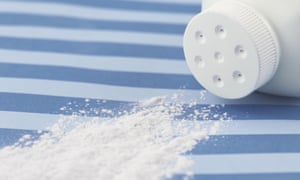The family of a woman in the US who died from ovarian cancer after using Johnson & Johnson baby powder has been awarded damages. So how much of a risk does talc pose?

What could be more wholesome than Johnson & Johnson’s talcum powder? It is the fragrant way to dry the bits towels can’t reach. Up to 40% of women may use talc at least occasionally. But last week a Missouri jury awarded $72m (£51.5m) in damages to the family of Jackie Fox, who died of ovarian cancer having used the well-known brand of powder for years. More than 1,200 other cases are still waiting to be heard.
The solution
Three years ago I wrote about a paper linking talc to an increased risk of ovarian cancer. It is a debate that has rumbled on for decades. Talc is naturally occurring and consists of magnesium, silicon, hydrogen and oxygen. It is mined from the soil and, before 1973, was often contaminated with asbestos (a naturally occurring close neighbour in the ground).
Last year, a court awarded a woman in California $13m for developing a mesothelioma (a tumour of the lining of the lungs) from using talc with asbestos in it – the tiny fibres in talc are easily inhaled. Removing the asbestos, however, did not stop some studies continuing to link talc with ovarian cancer. A 2003 meta-analysis looking at 16 studies involving 11,933 women found talc was associated with a higher risk of ovarian cancer, but a 2014 study of 61,576 women found no such link. The International Agency for Research on Cancer(part of the WHO) has classified talc applied to the genitals as “possibly carcinogenic”. The studies that have found the weak links have been case-control studies that compare the use of talc by women with ovarian cancer to those without it. They rely on self-reported talc use, which is not terribly reliable.
[Source:- Thr Gurdian]




